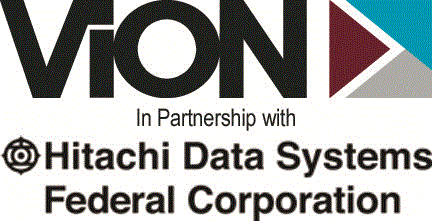Twitter Feed
Cloud Migration Part 2: Classify your data
In my first post of this series, “Cloud migration part one: An overview,” I provided a high-level summary of how enterprises should migrate applications to the cloud. In this installment,…
Could Budget Sweeps Fix Your Cybersecurity Problem?
A recent roundtable discussion in Washington, DC with Federal IT and Cyber leaders focused on the business drivers, challenges and evolving strategies around cybersecurity in government. After an opening presentation…
Cloud Migration Part 1: An Overview
Cloud Migration Part One: An Overview Business is all about efficiency and effectiveness. In today’s world, however, those twin goals almost always lead to cloud migration. This anecdotal observation…
A Personal Technology for Good Redux: Call for Code
In 2013 I had the opportunity to manage a $2M demonstration of how cloud computing could be used to support natural disasters. In that NCOIC Geospatial Community Cloud (GCC) demonstration,…
A Path to Hybrid Cloud
Cloud computing is now an operational reality across every industry. Organizations that fail to leverage this economic, operational and technology consumption model are merely consigning themselves to irrelevance. The rapid…
Human-Led Collaboration with Machines
When charged with managing large and complex efforts, an overarching project management task is risk assessment. It involves documenting the current situation, comparing it to the past, and understanding the…
Sensomorphic
240 million results are returned in 1.06 seconds (as of May 28, 2018) when you search for cloud computing in a Google search. With that much information available, and that many…
Artificial Intelligence and the Project Manager
Organizations use teams to create wealth, market share, customer service, competitive advantage, and organizational success. Effective teams accomplish their assigned end goals by engaging in collaboration as a joint learning…
Building A Collaborative Team
Recently, Harvard Business Review cited some insightful research into team behavior at 15 multinational companies. It found that although these teams tended to be large, virtual, diverse, and composed of…
Welcome the New Project Manager!
According to CIO.com, the six traits of highly effective project managers are: Be a strategic business partner who can offer higher-level strategic leadership skills, not just technical management skills, provide…
 This year has brought big news, significant changes and increased awareness of the adoption of cloud computing in Government. In fact Cloud computing may be the biggest and most overhyped term in Government information technology today. It is also the most discussed topic in agency strategy, cyber security forums and mission / program reviews. While lots of conversation has been devoted to technology and the benefits that government customers can derive from Cloud, in the end the biggest challenge may be the acquisition of cloud services. Cloud computing presents a different set of acquisition challenges to the federal government and this shift requires a rethinking the agency acquisition process. Smart purchasing decisions require an understanding of security requirements, service models and service level agreements.
This year has brought big news, significant changes and increased awareness of the adoption of cloud computing in Government. In fact Cloud computing may be the biggest and most overhyped term in Government information technology today. It is also the most discussed topic in agency strategy, cyber security forums and mission / program reviews. While lots of conversation has been devoted to technology and the benefits that government customers can derive from Cloud, in the end the biggest challenge may be the acquisition of cloud services. Cloud computing presents a different set of acquisition challenges to the federal government and this shift requires a rethinking the agency acquisition process. Smart purchasing decisions require an understanding of security requirements, service models and service level agreements. ( This content is being syndicated through multiple channels. The opinions expressed are solely those of the author and do not represent the views of GovCloud Network, GovCloud Network Partners or any other corporation or organization.)
( Thank you. If you enjoyed this article, get free updates by email or RSS – © Copyright Kevin L. Jackson 2015)
Cloud Computing
- CPUcoin Expands CPU/GPU Power Sharing with Cudo Ventures Enterprise Network Partnership
- CPUcoin Expands CPU/GPU Power Sharing with Cudo Ventures Enterprise Network Partnership
- Route1 Announces Q2 2019 Financial Results
- CPUcoin Expands CPU/GPU Power Sharing with Cudo Ventures Enterprise Network Partnership
- ChannelAdvisor to Present at the D.A. Davidson 18th Annual Technology Conference
Cybersecurity
- Route1 Announces Q2 2019 Financial Results
- FIRST US BANCSHARES, INC. DECLARES CASH DIVIDEND
- Business Continuity Management Planning Solution Market is Expected to Grow ~ US$ 1.6 Bn by the end of 2029 - PMR
- Atos delivers Quantum-Learning-as-a-Service to Xofia to enable artificial intelligence solutions
- New Ares IoT Botnet discovered on Android OS based Set-Top Boxes



